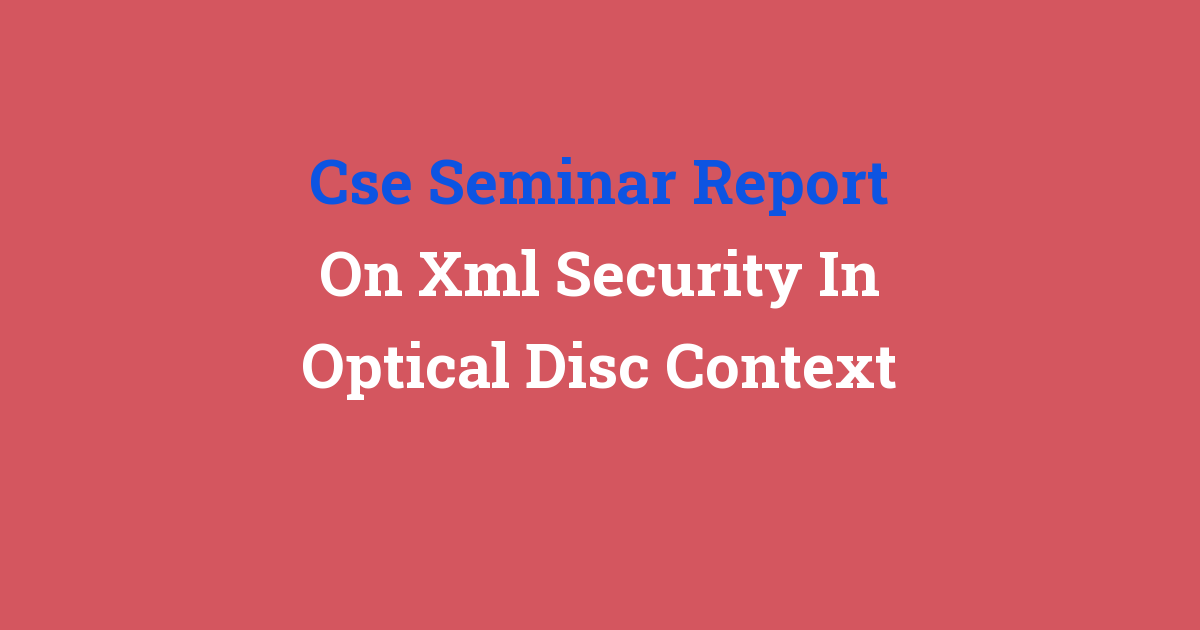Seminar report on XML security in context of optical disc technology.
Computer Science Engineering Seminar Report on XML Security in Optical Disc Context
Introduction
In today’s digital age, the importance of data security cannot be overstated. With the widespread use of optical discs for storing and transferring data, the need for ensuring the security and integrity of this data has become paramount. In this seminar report, we will delve into the world of XML security in the context of optical discs, exploring the challenges and solutions in this domain.
Problem Statement
The proliferation of optical discs for storing and transferring data has exposed them to security vulnerabilities, such as unauthorized access and data manipulation. XML, or Extensible Markup Language, is a popular format for representing and exchanging data. However, the security of XML documents stored on optical discs is a major concern, as they can be easily tampered with or intercepted by malicious actors.
Existing System
In the existing system, the security of XML documents on optical discs relies primarily on encryption techniques and access control mechanisms. While these methods provide a certain level of security, they are not foolproof and can be circumvented by sophisticated attackers. Moreover, the performance overhead associated with these security measures can impact the speed and efficiency of data transfer from optical discs.
Disadvantages
The disadvantages of the existing system include:
– Vulnerability to unauthorized access and data manipulation
– Performance overhead due to encryption and access control mechanisms
– Lack of robustness in ensuring data integrity during transfer
Proposed System
In view of the limitations of the existing system, we propose a novel approach to XML security in the optical disc context. Our proposed system leverages digital signatures and authentication mechanisms to ensure the integrity and authenticity of XML documents stored on optical discs. By digitally signing XML documents and verifying their signatures during data transfer, we can mitigate the risks of tampering and unauthorized access.
Advantages
The advantages of our proposed system include:
– Enhanced data integrity and authenticity through digital signatures
– Reduced risk of unauthorized access and data manipulation
– Improved performance efficiency by eliminating encryption overhead
Features
The key features of our proposed system are:
– Digital signature generation and verification for XML documents
– Authentication mechanisms to verify the identity of data recipients
– Secure transfer of XML data on optical discs with minimal performance impact
Conclusion
In conclusion, the security of XML data on optical discs is a critical concern that requires effective solutions to safeguard against threats such as unauthorized access and data manipulation. Our proposed system offers a robust and efficient approach to XML security in the optical disc context, leveraging digital signatures and authentication mechanisms to ensure data integrity and authenticity. By implementing our system, organizations can enhance the security of their data transfer processes and minimize the risks associated with storing and transferring XML documents on optical discs.

